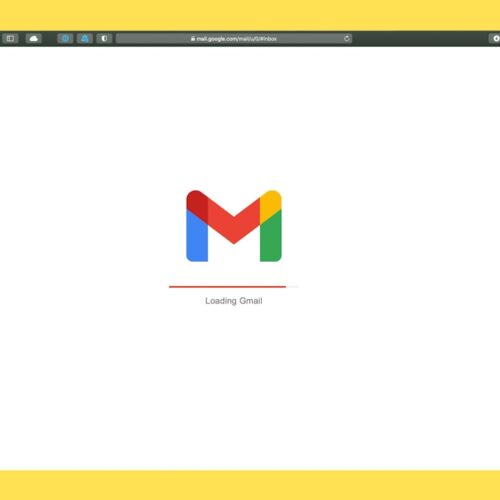Email marketing is a powerful tool in today’s digital landscape that allows businesses to connect with their audience, build relationships, and drive conversions. It involves sending targeted emails to a group of individuals who have expressed interest in a company’s products or services. The goal of email marketing is to engage recipients, provide valuable content, and ultimately drive them to take action.
One of the key advantages of email marketing is its potential return on investment (ROI). According to a study by the Direct Marketing Association, email marketing has an average ROI of 3800%, meaning that for every dollar spent on email marketing, businesses can expect an average return of $38. This high ROI can be attributed to several factors, including the low cost of email marketing compared to other forms of advertising, the ability to reach a large audience quickly and easily, and the ability to track and measure the success of email campaigns.
Key Takeaways
- Email marketing can provide a high ROI for businesses.
- Understanding your target audience is crucial for effective email marketing.
- Engaging and relevant email content is key to keeping subscribers interested.
- Email design and layout can impact the success of your campaigns.
- Personalization can improve open and click-through rates.
Understanding Your Target Audience for Effective Email Marketing
To effectively engage your audience through email marketing, it is crucial to understand who they are and what they want. This requires gathering data and insights on your target audience. One way to do this is by conducting market research, which can involve surveys, focus groups, or analyzing customer data. By understanding your audience’s preferences, interests, and pain points, you can tailor your email content to resonate with them.
Another way to gather data on your target audience is by analyzing their behavior and interactions with your emails. This can include tracking open rates, click-through rates, and conversion rates. By analyzing this data, you can gain insights into what types of content and offers are most effective in driving engagement and conversions.
Crafting Engaging and Relevant Email Content
Once you have a clear understanding of your target audience, you can begin crafting engaging and relevant email content. The key elements of effective email content include compelling subject lines, engaging body copy, and clear calls-to-action.
Subject lines are the first thing recipients see when they receive an email, so it is important to make them attention-grabbing and compelling. A good subject line should be concise, relevant to the recipient, and create a sense of urgency or curiosity.
The body copy of your email should be engaging and provide value to the recipient. It should be concise, easy to read, and focused on the recipient’s needs and interests. Use a conversational tone and include relevant images or videos to make your email more visually appealing.
Calls-to-action (CTAs) are an essential part of any email marketing campaign. They should be clear, concise, and compelling. Use action verbs and create a sense of urgency to encourage recipients to take the desired action, whether it is making a purchase, signing up for a webinar, or downloading a free resource.
The Importance of Email Design and Layout
In addition to compelling content, the design and layout of your emails play a crucial role in engaging recipients. A visually appealing and user-friendly email design can make a significant difference in the success of your email marketing campaigns.
When designing your emails, it is important to keep in mind that many recipients will be viewing them on mobile devices. Therefore, it is essential to use responsive design techniques that ensure your emails look great on any screen size.
Use a clean and organized layout that makes it easy for recipients to scan and digest the content of your email. Use headings, subheadings, bullet points, and white space to break up the text and make it more visually appealing.
Include relevant images or videos in your emails to make them more engaging. However, be mindful of file sizes as large images or videos can slow down load times and negatively impact the user experience.
Personalization: Tailoring Emails to Individual Recipients
Personalization is a powerful strategy in email marketing that involves tailoring emails to individual recipients based on their preferences, behavior, and demographic information. Personalized emails have been shown to have higher open rates, click-through rates, and conversion rates compared to generic emails.
There are several ways to personalize your emails. One way is by using the recipient’s name in the subject line or greeting. This simple personal touch can make the email feel more relevant and engaging.
Another way to personalize your emails is by segmenting your email list based on specific criteria, such as demographics, purchase history, or engagement level. By sending targeted emails to specific segments of your audience, you can provide content and offers that are more relevant to their needs and interests.
You can also personalize your emails based on the recipient’s behavior and interactions with your website or previous emails. For example, if a recipient has abandoned their shopping cart, you can send them a personalized email with a reminder and an incentive to complete their purchase.
Building a Strong Email List: Quality vs Quantity

Building a strong email list is essential for the success of your email marketing campaigns. However, it is important to focus on quality rather than quantity when it comes to growing your email list.
A quality email list consists of individuals who have expressed genuine interest in your products or services and have given you permission to contact them via email. These individuals are more likely to engage with your emails, convert into customers, and become loyal advocates for your brand.
To build a quality email list, it is important to use ethical and transparent methods of acquiring subscribers. Avoid purchasing email lists or using deceptive tactics to collect email addresses. Instead, focus on organic methods such as offering valuable content in exchange for email sign-ups or promoting your newsletter on your website and social media channels.
Timing is Everything: Scheduling Emails for Optimal Results
The timing of your emails can have a significant impact on their success. Sending emails at the right time can increase open rates, click-through rates, and conversions. However, there is no one-size-fits-all answer to the best time to send emails, as it can vary depending on your audience and industry.
One way to determine the optimal timing for your emails is by analyzing recipient behavior and engagement data. Look for patterns in open rates, click-through rates, and conversions based on the time of day or day of the week. This data can provide insights into when your audience is most likely to engage with your emails.
Another strategy is to conduct A/B tests where you send the same email to different segments of your audience at different times. By comparing the results of these tests, you can determine the optimal timing for your emails.
A/B Testing: Experimenting with Different Email Campaigns
A/B testing is a valuable technique in email marketing that involves experimenting with different versions of an email campaign to determine which one performs better. By testing different elements such as subject lines, body copy, CTAs, or design, you can optimize your email campaigns for maximum engagement and conversions.
When conducting A/B tests, it is important to test only one element at a time to accurately determine its impact on the success of your email campaign. For example, if you want to test the impact of different subject lines, send two versions of the same email with different subject lines to two segments of your audience. Compare the open rates and click-through rates of each version to determine which subject line is more effective.
It is also important to ensure that your sample size is large enough to yield statistically significant results. The larger the sample size, the more reliable and accurate your test results will be.
Measuring Success: Tracking Metrics and Analyzing Results
Tracking metrics and analyzing results is essential for measuring the success of your email marketing campaigns and making data-driven decisions. There are several key metrics that you should track to evaluate the performance of your email campaigns.
Open rate: The open rate measures the percentage of recipients who open your email. A high open rate indicates that your subject line and sender name are compelling and relevant to your audience.
Click-through rate (CTR): The click-through rate measures the percentage of recipients who click on a link or CTA in your email. A high CTR indicates that your email content and CTAs are engaging and compelling.
Conversion rate: The conversion rate measures the percentage of recipients who take the desired action, such as making a purchase or signing up for a webinar. A high conversion rate indicates that your email content and offers are effective in driving conversions.
Bounce rate: The bounce rate measures the percentage of emails that were not delivered to the recipient’s inbox. A high bounce rate can indicate issues with your email list quality or deliverability.
By tracking these metrics and analyzing the results, you can gain insights into what is working and what needs improvement in your email marketing campaigns. Use this data to make data-driven decisions and optimize your future email campaigns for better results.
Staying Ahead of the Game: Trends and Best Practices in Email Marketing
The field of email marketing is constantly evolving, and it is important to stay up-to-date with the latest trends and best practices to stay ahead of the competition. Here are some current trends and best practices in email marketing:
– Automation: Automated email campaigns allow you to send targeted emails based on specific triggers or actions, such as welcome emails, abandoned cart reminders, or birthday emails. Automation can save time and improve the relevance and effectiveness of your email campaigns.
– Interactive content: Interactive elements such as quizzes, polls, or surveys can increase engagement and encourage recipients to interact with your emails. This can provide valuable insights into their preferences and interests.
– User-generated content: Incorporating user-generated content such as customer reviews or testimonials in your emails can build trust and credibility with your audience. It also encourages recipients to engage with your brand and share their experiences.
– Segmentation and personalization: As mentioned earlier, segmenting your email list and personalizing your emails based on recipient data and behavior can significantly improve engagement and conversions.
– Mobile optimization: With the increasing use of mobile devices, it is essential to optimize your emails for mobile screens. Use responsive design techniques and test your emails on different devices to ensure they look great on any screen size.
Effective email marketing is a powerful tool for businesses of all sizes to connect with their audience, build relationships, and drive conversions. By understanding your target audience, crafting engaging and relevant email content, designing visually appealing emails, personalizing your emails, building a quality email list, scheduling emails for optimal results, conducting A/B tests, tracking metrics, and staying up-to-date with the latest trends and best practices, you can maximize the success of your email marketing campaigns. Implement the tips and strategies discussed in this article to take your email marketing efforts to the next level.
If you’re looking to enhance your email marketing strategy, you might find this article on SolveCopy’s blog particularly helpful. It provides valuable insights and tips on how to create engaging and effective email campaigns that drive results. Check it out here to take your email marketing efforts to the next level.


